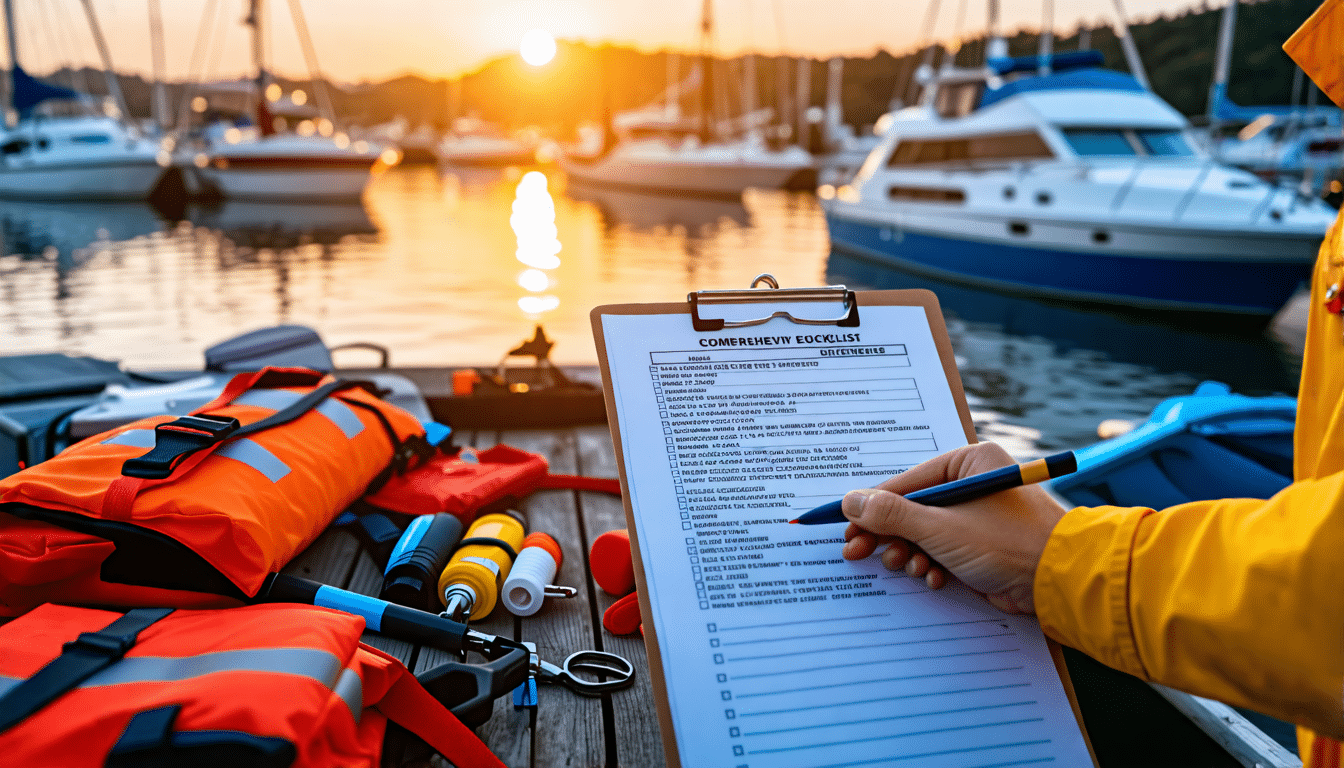The Ultimate Checklist for Pre-Departure Boat Inspections
Preparing for a boat trip is exciting, but ensuring everything is in perfect working order is crucial for a safe and enjoyable outing. This ultimate checklist for pre-departure boat inspections will guide you through every important step.
Safety Gear and Equipment
Safety should always come first when heading out on the water. Start your pre-departure inspection by checking all essential safety gear and equipment.
- Life Jackets: Ensure you have enough life jackets for all passengers, and that they are in good condition.
- Fire Extinguishers: Verify the condition and expiration dates of fire extinguishers.
- First Aid Kit: Check that your first aid kit is fully stocked and easily accessible.
- Flares and Signaling Devices: Make sure flares and other signaling devices are in good working order.
- Throwable Devices: Have a throwable flotation device readily available for emergency use.
Navigation and Communication
A reliable navigation and communication system is indispensable for safe boating. Ensure all related equipment is functioning correctly.
- GPS and Maps: Confirm that your GPS is operational and up-to-date. Keep a set of updated maps on board as a backup.
- VHF Radio: Test your VHF radio to ensure clear communication with other vessels and emergency services.
- Navigation Lights: Check all navigation lights, including anchor lights, to ensure visibility in low light conditions.
- Sound-Producing Devices: Have a working horn or whistle on board to signal your position in foggy conditions.
Engine and Fuel Systems
A well-maintained engine and fuel system are vital for a trouble-free voyage. Review these components to avoid any mechanical issues.
- Fluids: Check engine oil, coolant, and other fluid levels. Top off or replace as needed.
- Fuel Levels: Ensure you have enough fuel for the entire trip plus a reserve.
- Battery: Verify the battery is fully charged and in good condition. Carry a spare if possible.
- Belts and Hoses: Inspect belts and hoses for any signs of wear or damage.
- Spares and Tools: Carry essential spare parts and tools for minor repairs on the go.
Hull and Deck
A thorough inspection of the hull and deck can prevent water damage and improve the overall safety of your vessel.
- Hull Integrity: Examine the hull for any cracks, blisters, or other signs of damage.
- Scuppers and Drains: Ensure scuppers and drains are clear of debris and functioning properly.
- Deck Equipment: Check that all deck fittings, railings, and stanchions are secure.
- Hatches and Ports: Verify that hatches and ports close securely to prevent water ingress.
Electrical and Plumbing Systems
Properly functioning electrical and plumbing systems are key to a comfortable boating experience. Inspect these systems to ensure they are operating effectively.
- Lights and Electronics: Test all interior and exterior lights, as well as other electronic devices.
- Bilge Pump: Confirm the bilge pump is in good working order and can remove any water that enters the boat.
- Water Systems: Check for leaks in your freshwater and marine toilet systems.
- Fuses and Breakers: Have a supply of spare fuses and check breakers to prevent electrical issues.
Provisions and Comfort
Ensuring everyone on board is comfortable and well-provisioned will make your trip more enjoyable.
- Food and Water: Stock plenty of food and drinking water for the trip duration.
- Weather Gear: Bring appropriate clothing and gear for varying weather conditions.
- Entertainment: Pack books, games, or other forms of entertainment for downtime.
By following this ultimate checklist for pre-departure boat inspections, you can ensure a safe and enjoyable boating experience. Happy sailing!



